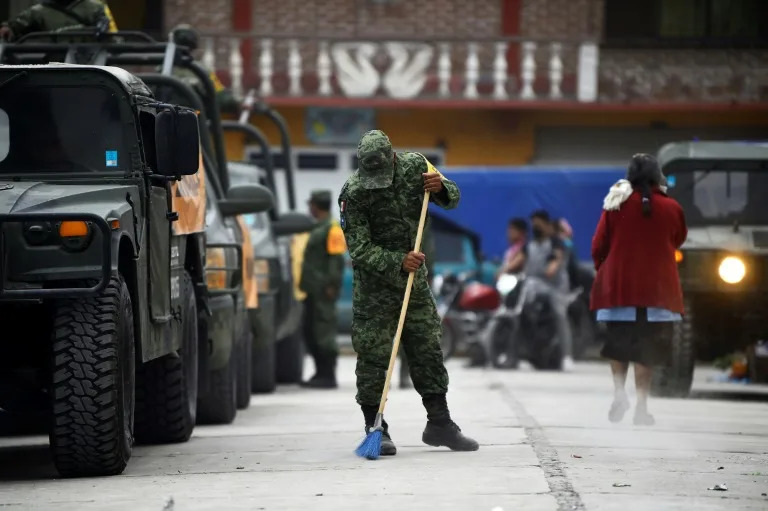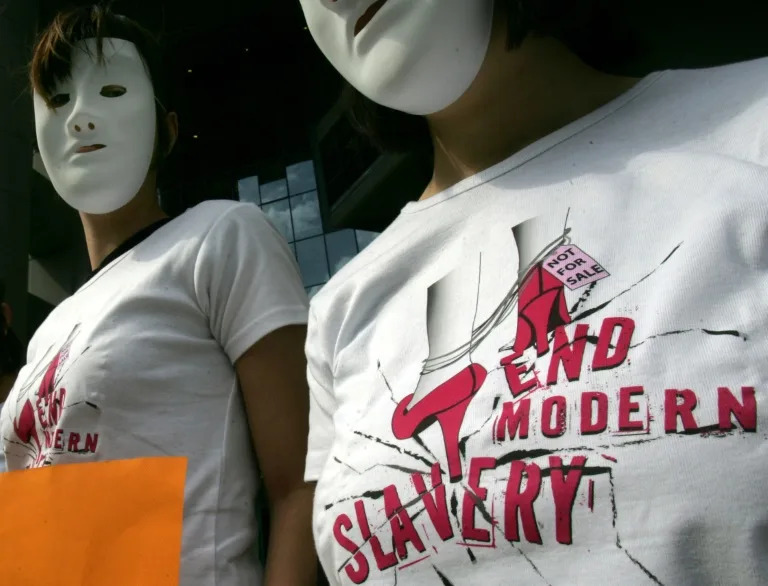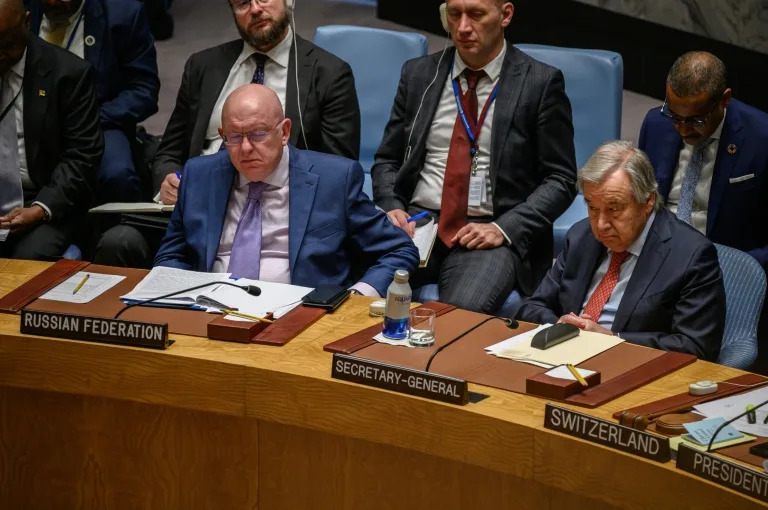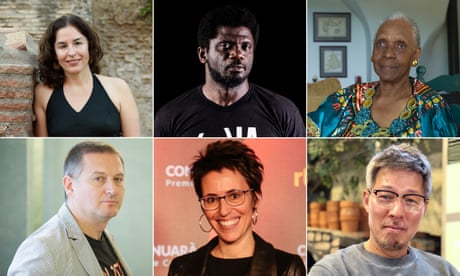Pupil started deadly Guyana dorm fire over confiscated phone: source
Denis Chabrol
Tue, May 23, 2023
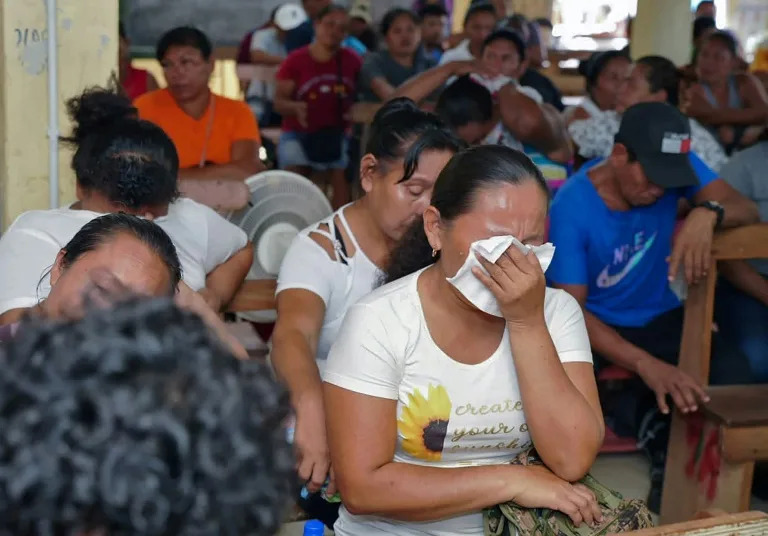
Relatives of the school dormitory fire sob during a meeting with Guyana President Irfaan Ali in Mahdia, where the tragedy happened
The weekend school dormitory blaze that killed 19 minors in central Guyana is believed to have been started by a disgruntled pupil angry at having her mobile phone confiscated, a government source told AFP on Tuesday.
Sunday's inferno gutted the building in the regional capital of Mahdia, which housed girls aged 11-12 and 16-17. Some are still hospitalized.
An official police report confirmed that "a female student is suspected of having set the devastating fire because her cellular phone was taken away."
The government source, speaking anonymously, said the teenage pupil in question had admitted to the arson attack and was under police guard at the district hospital in Mahdia.
Police are seeking advice on whether to charge her, the official said.
On Monday, Guyana Police Commissioner Clifton Hicken had already stated that investigators believed the fire was "maliciously set."
According to the government source, students aren't allowed to have phones in the dormitory.
After the staff took away the girl's phone, she "threatened the same night that she will burn down the building and everybody heard her," the government source said.
The official said that minutes later the girl went to the bathroom area and sprayed insecticide on a curtain before lighting a match.
Several pupils had recounted the same version of events, the official said.
The Guyanese government declared three days of mourning after the dormitory fire in Mahdia killed at least 19 people © Keno GEORGE / AFP
- Locked inside -
The girls were locked in for the night, and a house mistress told police that in her panic she could not find the front door key. The building had metal bars on the windows preventing pupils from escaping through them.
The house mistress "locks up every night at nine o'clock to ensure the girls don't get away from the building," the official said.
"According to the female students, they were asleep and were awakened by screams," said the police report.
Despite efforts by other students to extinguish the blaze, the official said the fire quickly swept through the wooden ceiling and eventually engulfed the entire building.
Some pupils, including the girl who allegedly started the fire, managed to escape when some men broke down a door.
"Upon checking, they saw fire/smoke in the bathroom area, which quickly spread in the building, causing several students to receive burns to their bodies and smoke inhalation, while several managed to escape," the police report said.
The police report said there were 57 pupils in the dormitory, which was "a one-flat concrete building measuring about 100 feet by 40 feet, with several windows, all grilled, and five doors."
Firefighters did not arrive on the scene until 25 minutes after the fire took hold.
The house mistress' son apparently also died in the fire.
Thirteen young girls and the boy died in the building, while five more pupils died later at the hospital.
As well as the dead, around 20 children were taken to hospital. Seven remain hospitalized, with two in critical condition, according to a hospital source.
Six autopsies performed so far revealed the minors died from smoke inhalation and burns, according to the police. The other 13 unrecognizable bodies were being transported to the capital, Georgetown, for DNA testing to confirm their identities.
National security advisor Gerry Gouveia said that a forensic team from Barbados had arrived in Guyana to help with the identification. Another team from the United States is expected.
Guyanese President Irfaan Ali said that Cuba also offered to provide medical support.
Guyana, with a population of 800,000, is South America's only English-speaking nation. It is a former Dutch and British colony, which recently discovered it holds the world's largest per-capita oil reserves.
dc-pgf/bc/nro/md
- Locked inside -
The girls were locked in for the night, and a house mistress told police that in her panic she could not find the front door key. The building had metal bars on the windows preventing pupils from escaping through them.
The house mistress "locks up every night at nine o'clock to ensure the girls don't get away from the building," the official said.
"According to the female students, they were asleep and were awakened by screams," said the police report.
Despite efforts by other students to extinguish the blaze, the official said the fire quickly swept through the wooden ceiling and eventually engulfed the entire building.
Some pupils, including the girl who allegedly started the fire, managed to escape when some men broke down a door.
"Upon checking, they saw fire/smoke in the bathroom area, which quickly spread in the building, causing several students to receive burns to their bodies and smoke inhalation, while several managed to escape," the police report said.
The police report said there were 57 pupils in the dormitory, which was "a one-flat concrete building measuring about 100 feet by 40 feet, with several windows, all grilled, and five doors."
Firefighters did not arrive on the scene until 25 minutes after the fire took hold.
The house mistress' son apparently also died in the fire.
Thirteen young girls and the boy died in the building, while five more pupils died later at the hospital.
As well as the dead, around 20 children were taken to hospital. Seven remain hospitalized, with two in critical condition, according to a hospital source.
Six autopsies performed so far revealed the minors died from smoke inhalation and burns, according to the police. The other 13 unrecognizable bodies were being transported to the capital, Georgetown, for DNA testing to confirm their identities.
National security advisor Gerry Gouveia said that a forensic team from Barbados had arrived in Guyana to help with the identification. Another team from the United States is expected.
Guyanese President Irfaan Ali said that Cuba also offered to provide medical support.
Guyana, with a population of 800,000, is South America's only English-speaking nation. It is a former Dutch and British colony, which recently discovered it holds the world's largest per-capita oil reserves.
dc-pgf/bc/nro/md

